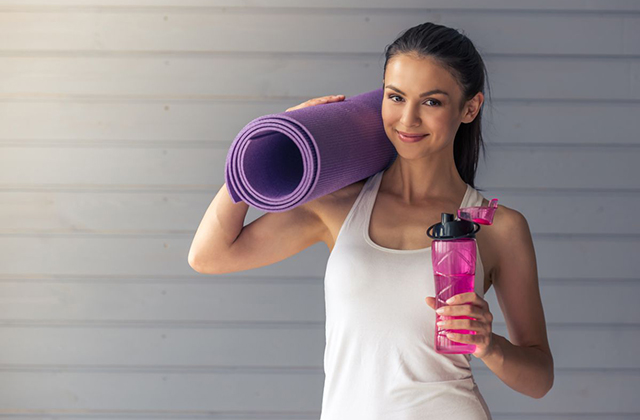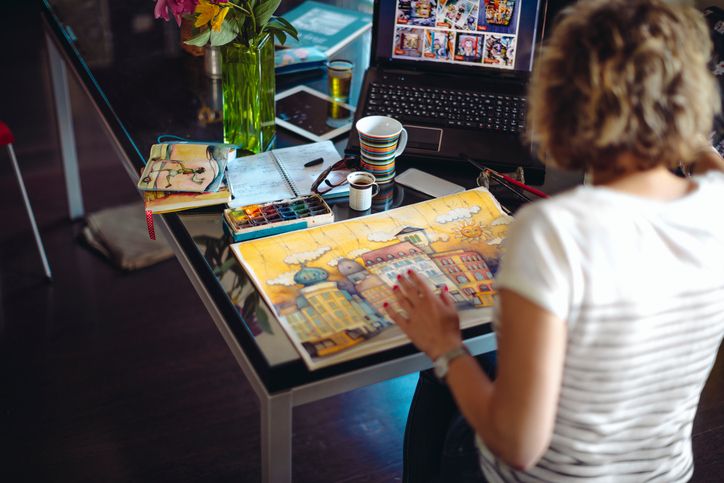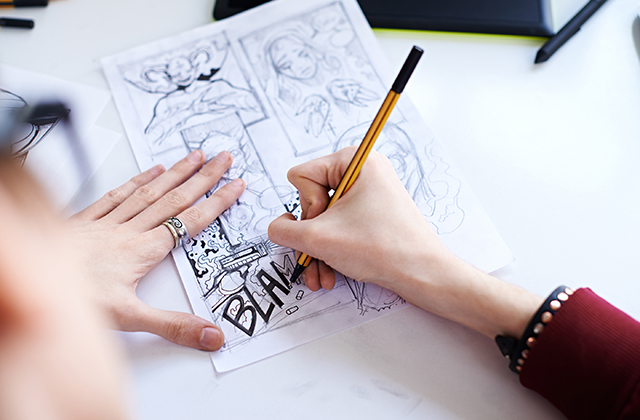Are you using the handrail more and more often when you go down the stairs. Are your knees failing you? Registering for a Pilates instructor course is the best move in starting to change your lifestyle.
More people are now seeing their doctors because of painful joints, muscles and tendons than for the common cold, and the knee joint is responsible for over 20 million doctor visits each year in the US alone. Your knee plays a major role in the chain of weight bearing in the leg. It has to respond to ground forces from below and the load of your body from above. It is a relatively simple joint, but it has to be ready to quickly react to force from the ground while balancing the load of the rest of the body at the same time. Your knee is at the mercy of what’s going on in the joints directly above and below: the hip, pelvis, ankle and foot.
Although there are many reasons for knee pain (arthritis, meniscus and ligament damage for example), long term relief of knee pain has to start with an assessment of your whole structure. This assessment begins with your feet to see how they influence the alignment and forces at the knee. Any joint is only as good as its structure, and poor alignment in the feet and ankles has a negative influence on the knee, creating muscle imbalances and eventually pain and stiffness.
The hip joint also has a similar affect on the knee – poor mechanics and muscle imbalances in the hip creates problems for the knee. And because the socket of the hip joint is formed by the pelvis, it has to be aligned correctly too. In fact, when doing a full assessment of the knee, the whole body must be evaluated, since any structural imbalances in the body can affect the knee’s ability to function.
The good news is that a well balanced Pilates-based Physical Therapy program addresses the whole body. Pilates is a recent addition to many Physical Therapy programs and is rapidly growing in popularity throughout the world. Combining Pilates with Physical Therapy will improve your body awareness, alignment, strength, flexibility and balance. You’ll learn how to move with more efficiency and less pain.
At first, new and balanced movement habits feel weird and unfamiliar because they’re foreign to your nervous system. Working with a skilled Pilates trained Physical Therapist will help you understand your own unique postural and movement habits and help you practice correct patterns effectively.
Here are a couple of things you can do right now to find out how your knees stack up:
1. Stand in shorts, barefoot in front of a full length mirror and look at your leg alignment. What do you see? Are there any funny angles between your hips and your knees? What about your feet? Do you have an arch on the inside of your foot? Can you see that your whole leg influences the alignment of your knee? This includes the alignment of your pelvis, since the pelvis is the top of your hip joint. Be aware that when you do any exercise “for your knees”, you must also consider the rest of your body, especially the foot, ankle and hip.
2. While standing, imagine a line going through the center of your leg from your hip joint, through the center of your thigh, your knee joint, the center of your lower leg, ankle and out the 2nd toe. This is the ideal alignment for your leg. A word about your hip joint: did you know that your “hips” are not the wide bones of your pelvis, but the place where you crease when you bend your knee towards your chest? This is where your heel should line up when your foot hits the ground when walking. The hip joint itself is really quite narrow – about the same distance apart as your sits bones in the back.
3. When you stand, walk and exercise, the alignment of your whole leg affects which muscles you use to move. And the way you use your muscles strongly influences your alignment. Be very aware of keeping correct alignment from your pelvis to your foot – hip to 2nd toe – so that you create good balance around your knees. If you do exercises like squats and leg press, do you pay attention to your leg alignment? Your knee program will be far more effective if you do. Remember that pain is your body’s way of telling you that something’s not right, so if you can’t modify your position to relieve the pain, skip the exercise. Remember also that not every “recommended” knee exercise is right for every knee – you need to find out what’s right for your knees.
The point is that your knee pain is usually just a result of the alignment you set up from the ground (you feet and ankles) and the load you put on them from above (your hips, pelvis and trunk). Figure out how to de-stress your knee joints by changing your whole-body alignment and your knee pain and stiffness will resolve.
If you have knee pain and want to find out how to get relief, see a Pilates trained Physical Therapist who will assess your whole body, rather than looking only at your knees. A Pilates exercise program, with a home routine, is a great way to reduce pain and stiffness in your knees, and a 2nd pair of experienced eyes will help you sort out your unique imbalances. Then you’ll know exactly what to do for YOUR knees.
How do you find a Pilates trained Physical Therapist? Many PT clinics now offer Pilates, and many Pilates centers employee Physical Therapists. Check your local PT clinics and Pilates centers. And make sure that your practitioner has completed a comprehensive Pilates training program.
Copyright © Park Meadows Pilates 2008
Lindy Royer is a licensed Physical Therapist. She was introduced to The Pilates Method in the late 1990s and completed Pilates Certification in 2002. She had added Pilates to her Physical Therapy practice and is a Pilates educator and Master trainer.
In January 2005, Lindy opened Park Meadows Pilates and Physical Therapy in Lone Tree, CO. Park Meadows Pilates and Physical Therapy offers a program that seamlessly transitions patients from rehabilitation to fitness. The combination of research-based Physical Therapy and Pilates in private and group sessions improves outcomes and provides an environment for permanent pain relief.
The integration of Pilates into Lindy’s Physical Therapy practice has had a significant impact on the level of successful recovery she sees in her patients. Because Lindy has had her own health and physical challenges, she approaches her practice from a different perspective and uses her experience as a former patient to help others.
You can find out more about Pilates and Physical Therapy at: http://www.parkmeadowspilates.com
Article Source: http://EzineArticles.com/expert/Lindy_Royer/144431
Article Source: http://EzineArticles.com/1613434




